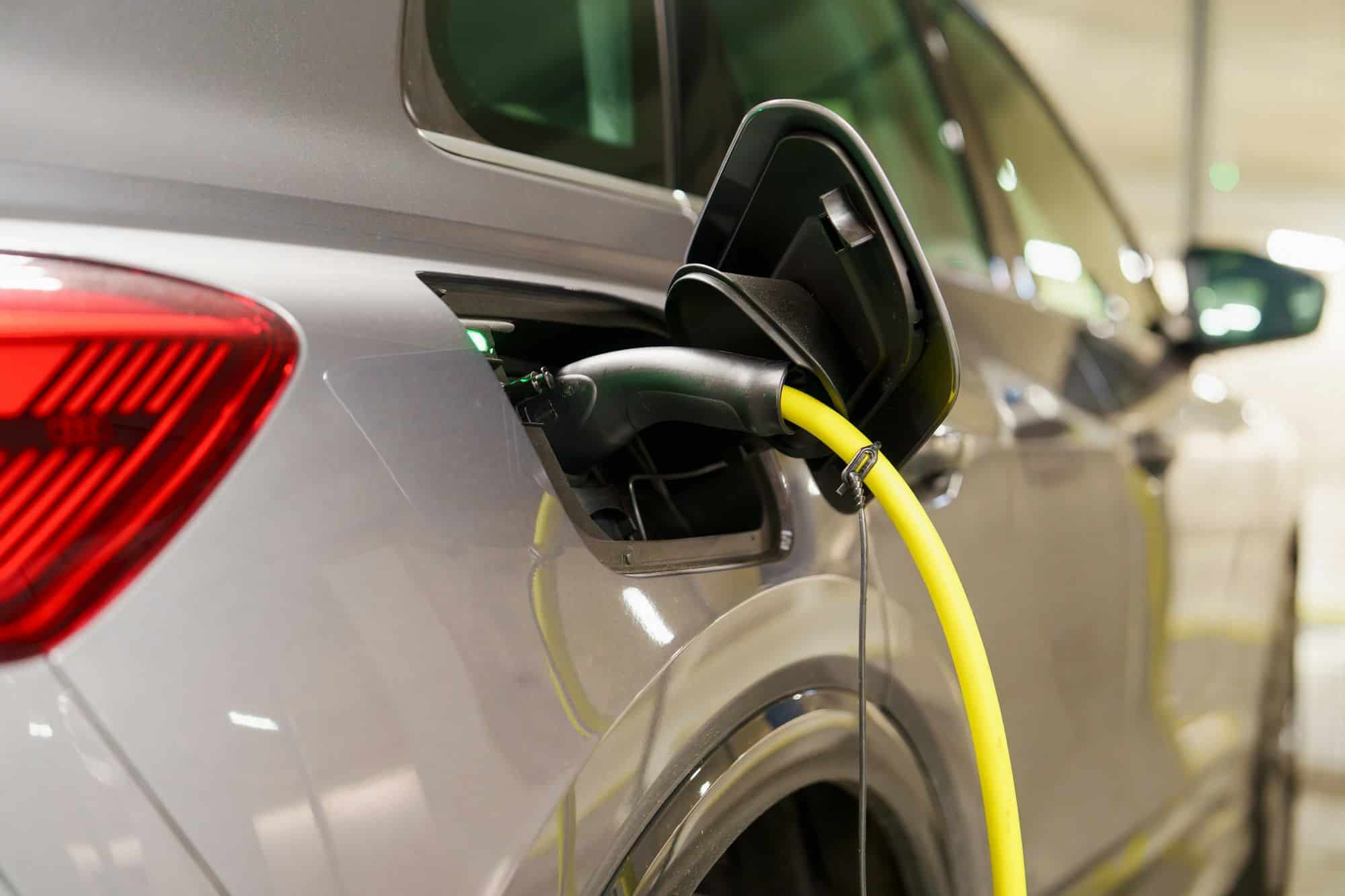How to Establish a Comprehensive Electric Vehicle Charging Station Network in the UK: A Step-by-Step Guide
As the UK strives to achieve its net-zero carbon goals by 2030, the development of a robust electric vehicle (EV) charging network is crucial. Here’s a detailed guide on how to establish a comprehensive EV charging station network, covering key steps, strategies, and examples from current initiatives.
Understanding the Current Landscape
Before diving into the steps to establish a comprehensive EV charging network, it’s essential to understand the current state of EV charging infrastructure in the UK.
Also to see : Unlocking Innovation: Strategies for UK Tech Firms to Thrive through International Collaborations
- Existing Infrastructure: As of 2023, the UK has over 40,000 public EV charging points, with a significant concentration in urban areas like London. However, there is a notable urban-rural divide, with rural areas lagging behind in terms of charging availability.
- Government Support: The UK government has been instrumental in expanding the EV charging network through various schemes such as the Electric Vehicle Homecharge Scheme (EVHS) and the Workplace Charging Scheme (WCS). These programs offer grants to support the installation of charging points at homes and workplaces.
Step 1: Planning and Strategy
The first step in establishing a comprehensive EV charging network is to develop a thorough plan and strategy.
Identifying Key Locations
- Urban and Rural Areas: Focus on both urban and rural areas to ensure equitable access. Cities like London are already well-equipped, but rural areas need significant investment to catch up.
- High-Demand Areas: Identify high-demand areas such as shopping centers, motorway services, and public car parks. For example, Be.EV is rolling out ultra-rapid chargers across several shopping centers, which will not only serve shoppers but also boost local retailer income.
Collaborating with Local Authorities
- Partnerships: Form partnerships with local authorities and other stakeholders. Places for London, for instance, is collaborating with Fastned to deliver multiple ultra-rapid charging hubs across London, with the aim of supporting the Mayor of London’s commitment to achieve Net Zero carbon by 2030.
Market Analysis
- Demand Projections: Conduct market analysis to predict future demand. According to TfL’s modelling, London will need around 4,000 rapid charge points by 2030 to meet current demand trends.
Step 2: Securing Funding and Support
Securing adequate funding and support is vital for the development of a comprehensive EV charging network.
In the same genre : Unlocking Funding: A Comprehensive Guide for UK Renewable Energy Startups to Access Government Grants
Government Grants and Schemes
- EVHS and WCS: Utilize government grants such as the EVHS and WCS to support the installation of charging points at homes and workplaces.
- Private Investment: Attract private investment. For example, Be.EV has secured £55 million in debt finance from NatWest and KfW-IPEX Bank, and is majority-owned by Octopus Energy Generation, which has pledged £110m of funding.
Public-Private Partnerships
- Strategic Partnerships: Form public-private partnerships to leverage expertise and resources. The partnership between Solutions30 and Connected Kerb is a prime example, aiming to deploy thousands of fast charging points across the South East of the UK.
Step 3: Designing and Installing Charging Infrastructure
The design and installation of charging infrastructure are critical components of the process.
Types of Chargers
- Ultra-Rapid Chargers: Install ultra-rapid chargers (150kW+) at key locations to provide quick charging solutions. These chargers can add up to 165 miles of range in a short 20-minute stop.
- Accessible Charging: Ensure that charging points are accessible and inclusive. For instance, the new charging hubs by Places for London will include at least one bay for drivers with accessibility needs.
Technical Requirements
- Grid Connection: Ensure that the charging points are properly connected to the grid. Solutions30’s partnership with Connected Kerb includes survey and design works, electrical installation, and grid connection for both AC and DC charging points.
- Smart Charging Technologies: Implement smart charging technologies to manage demand and balance the load on the electricity network. Be.EV’s chargers feature dynamic load-balancing abilities, which intelligently distribute power between vehicles according to capacity and demand.
Step 4: Ensuring Accessibility and User Experience
Accessibility and user experience are key factors in the success of an EV charging network.
Universal Access
- Inclusive Design: Ensure that public chargers are designed with universal access in mind. The UK government has implemented regulations to ensure that public charging stations are accessible to people with disabilities.
- Contactless Payment: Implement contactless payment options to make charging as simple as filling up at a petrol station. This regulation aims to streamline the charging process and make it accessible to all users without the need for specific apps or membership cards.
Safety and Security
- Customer Safety: Prioritize customer safety by designing sites with clear lines of sight, high illuminance lighting, and CCTV. Places for London’s new charging hubs will include these safety measures to provide a more positive experience for all customers.
Step 5: Maintaining and Upgrading the Network
Maintaining and upgrading the charging network is essential to ensure it remains efficient and reliable.
Ongoing Maintenance
- Regular Checks: Conduct regular maintenance checks to ensure that chargers remain in good working order. This includes addressing any issues promptly to maintain consumer confidence in the network.
- Technological Upgrades: Stay updated with the latest technological developments. For example, incorporating IoT and other future technologies can enhance the functionality and efficiency of the charging network.
Grid Upgrades
- Energy Storage Solutions: Consider energy storage solutions and smart charging technologies to manage peak demand on the electricity network. This is particularly important as the demand for EV charging increases.
Step 6: Promoting the Network and Encouraging Adoption
Promoting the network and encouraging EV adoption are crucial for its success.
Public Awareness
- Educational Campaigns: Run educational campaigns to inform the public about the benefits of EVs and the availability of charging infrastructure. This can help alleviate “range anxiety” and encourage more people to switch to electric vehicles.
Incentives and Discounts
- Incentives: Offer incentives such as discounts or loyalty programs to frequent users. For instance, charge point operators can provide customer Wi-Fi, advertising, and discounts to attract and retain customers.
Practical Insights and Actionable Advice
Here are some practical insights and actionable advice for establishing a comprehensive EV charging network:
Key Partnerships
- Collaborate with Local Authorities: Work closely with local authorities to identify suitable locations and secure necessary approvals.
- Private Sector Partnerships: Partner with private companies to leverage their expertise and resources.
Funding Strategies
- Government Grants: Utilize government grants and schemes to support the initial investment.
- Private Investment: Seek private investment to scale up the network.
User-Centric Design
- Accessible Charging: Ensure that charging points are accessible and inclusive.
- Contactless Payment: Implement contactless payment options for ease of use.
Technological Integration
- Smart Charging: Use smart charging technologies to manage demand and balance the load on the electricity network.
- IoT Integration: Incorporate IoT and other future technologies to enhance the functionality and efficiency of the charging network.
Detailed Bullet Point List: Key Considerations for Establishing an EV Charging Network
- Identify High-Demand Areas: Focus on shopping centers, motorway services, and public car parks.
- Collaborate with Local Authorities: Form partnerships to secure necessary approvals and support.
- Secure Funding: Utilize government grants and private investment.
- Install Ultra-Rapid Chargers: Provide quick charging solutions at key locations.
- Ensure Accessibility: Design charging points with universal access in mind.
- Implement Contactless Payment: Streamline the charging process with contactless payment options.
- Prioritize Customer Safety: Design sites with clear lines of sight, high illuminance lighting, and CCTV.
- Conduct Regular Maintenance: Ensure chargers remain in good working order.
- Stay Updated with Technological Developments: Incorporate IoT and other future technologies.
- Promote the Network: Run educational campaigns and offer incentives to encourage EV adoption.
Comprehensive Table: Comparison of EV Charging Network Initiatives
| Initiative | Key Features | Locations | Funding | Partners Involved |
|---|---|---|---|---|
| Places for London & Fastned | Ultra-rapid charging hubs, accessible design, safety measures | London | Subject to TfL approval | Places for London, Fastned |
| Solutions30 & Connected Kerb | Fast charging points, grid connection, IoT integration | South East UK | Multiyear, multimillion pound | Solutions30, Connected Kerb |
| Be.EV | Ultra-rapid chargers, dynamic load-balancing, shopping centers | Corby, Birmingham, Dartford, Yate | £3.5 million, £110m from Octopus Energy | Be.EV, Magnetar Capital, Northdale Advisors |
Quotes from Key Stakeholders
- Deputy Mayor for Environment and Energy Mete Coban: “London is leading the way in becoming the electric vehicle capital of the world, as we continue building a greener, fairer and more prosperous London for all.”
- Amanda Zambon, Policy Director of AICES: “AICES welcomes the announcement that Places for London will be delivering a series of ultra-rapid changing hubs across London from 2026. This aligns with TfL’s modelling that predicts London will need around 4,000 rapid charge points by 2030.”
- David Tong, CEO at Solutions30 UK: “Our expertise in designing and delivering EVC infrastructure, combined with our power networks and grid connection capabilities, will be a decisive factor in enabling Connected Kerb to achieve its ambitious goals.”
- Asif Ghafoor, CEO of Be.EV: “We are pleased to have forged this partnership with Magnetar and Northdale to bring ultra-rapid charging to shoppers across their portfolio. We have extensive experience installing and maintaining chargers at retail parks up and down the country.”
Establishing a comprehensive EV charging network in the UK requires a multifaceted approach that involves careful planning, strategic partnerships, and a commitment to accessibility and user experience. By following these steps and considering the practical insights and actionable advice provided, the UK can accelerate its transition to electric transportation, supporting both environmental goals and the growing demand for electric vehicles.











